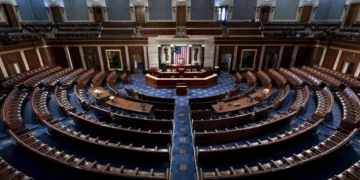Jan 25, 2025 Story by: Editor
The Tax Cuts and Jobs Act, a hallmark of Donald Trump’s first term as president, expired on December 31, 2024. As Trump and the Republican Party are in control in 2025, it’s crucial to reflect on the lessons learned from his earlier tax overhaul.
Signed into law in 2017, these tax changes marked the most significant update to the Internal Revenue Code since the Reagan administration. The revisions affected everything from corporate taxation on foreign income to capping state and local tax deductions for individuals.
While Trump pledged middle-class benefits at the time, the reality proved different. Over 80% of the tax cuts favored corporations, partnerships, and high-income individuals. The Congressional Budget Office estimated that this move would add a staggering $1.9 trillion to the U.S. deficit between 2018 and 2028. The middle-class benefits were minimal.
For Black Americans, the impact was even more marginal. Researcher focusing on race and U.S. income taxation, have studied how Trump’s tax policy affected middle- and low-income Black taxpayers and found it widened existing disparities.
Deepening Inequalities
These inequities are not new. Nearly three decades ago, research highlighted that Black taxpayers paid more federal taxes than white taxpayers with the same income, using U.S. Census Bureau data. This stems from systemic racism, including the lingering effects of slavery and Jim Crow laws, which have historically kept Black Americans from owning homes.
The U.S. federal tax code offers significant benefits for homeowners, such as deductions for mortgage interest and property taxes and tax-free profits of up to $500,000 on home sales. However, many Black Americans cannot access these advantages due to systemic barriers in homeownership.
It remains harder for middle-class Black families to secure mortgages than it is for lower-income white families, even when comparing Black applicants with high credit scores to white applicants with lower scores. When Black borrowers do obtain mortgages, they often face higher interest rates than their white counterparts.
Although Trump didn’t create these disparities, his 2017 tax policy worsened them. Black taxpayers paid more in federal taxes than white taxpayers with similar income, marital status, and employment profiles.
Failed Promises
American tax policy hinges on the principles of fairness: taxpayers with similar incomes should bear similar tax burdens, and tax structures should not widen wealth or income gaps. However, Trump’s tax cuts contradicted these principles.
Advocates of the cuts argued that reducing corporate tax rates would benefit all Americans through “trickle-down” economics, a concept popularized during the Reagan administration. Yet, much like earlier iterations of this approach, Trump’s corporate tax cuts primarily enriched the wealthy.
Instead of boosting wages or household incomes, corporations used the tax windfall to reward shareholders and executives. According to the AFL-CIO, 51% of corporate tax savings went to business owners, and 10% benefited the top five executives in each company. Meanwhile, only 38% of the cuts reached the top 10% of wage earners, leaving the bottom 90% with no real wage growth.
Racial Wealth Gap
Trump’s tax policies further widened income and wealth gaps by race. Corporate tax savings flowed disproportionately to wealthy shareholders, who are overwhelmingly white.
Sixty-six percent of white households own stocks, compared to fewer than 40% of Black households and under 30% of Hispanic households. Even when incomes are equal, stock ownership among Black families lags behind their white counterparts due to historical barriers, such as laws prohibiting property ownership and systemic theft of Black-owned land.
Health Care Impacts
Trump’s tax reforms also hurt low-income Americans by repealing the Affordable Care Act’s individual mandate, which required all Americans to have basic health insurance. After this mandate was removed, between 3 million and 13 million people dropped coverage by 2020.
Lower-income Americans, already vulnerable to medical debt, were the hardest hit. Studies indicate that Black Americans lost health coverage at higher rates than white Americans, with the uninsured rate for Black Americans increasing from 10.7% in 2016 to 11.5% in 2018.
Inflation Adjustments
The tax law also modified how the IRS calculates inflation for over 60 provisions, including the earned income and child tax credits. The new method, based on the chained consumer price index, assumes that consumers switch to cheaper goods as prices rise. However, low-income neighborhoods often lack access to affordable alternatives, disproportionately affecting Black families.
Since 2018, the cost of living has risen significantly, hitting Black households harder as they have fewer means to cope with inflation.
A Path Forward
With the Trump tax cuts set to expire, Congress has an opportunity to reexamine their impact and prioritize policies that address the disparities they exacerbated. A fairer tax system could help bridge the economic divide and support all Americans more equitably.
Source: The Conversation
















